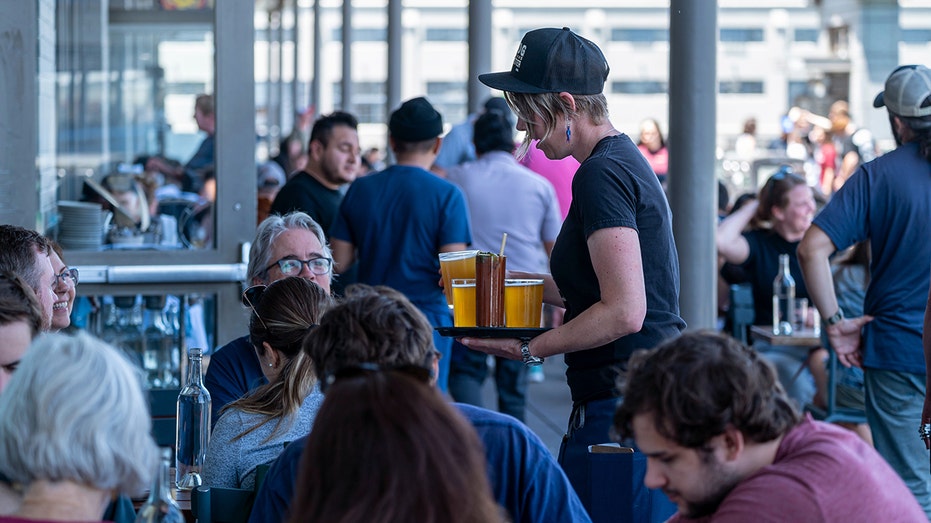Consumers are being hit with temporary surcharges due to the ongoing egg shortage in the U.S. food system. But experts told FOX Business that these surcharges are the lesser of two evils when compared to overall menu price increases.
Michelle Korsmo, the CEO of the National Restaurant Association (NAR), said that these surcharges are a temporary measure and can be removed from menus when macroeconomic conditions improve.
“When a restaurant operator adds a surcharge to their menu in a situation like this, it’s generally because they are optimistic that it will be resolved quickly and because they want to be transparent with their customers about their rising costs,” Korsmo told FOX Business.
For instance, the Waffle House, a Southern breakfast food chain, added a temporary 50 cent-per-egg surcharge to all of its menus on Monday.
WAFFLE HOUSE, OTHER COMPANIES ADD EGG SURCHARGE AMID SHORTAGE
The company blamed the ongoing egg shortage caused by highly pathogenic avian influenza (HPAI) — or bird flu — for the dramatic increase in egg prices, saying that “consumers and restaurants are being forced to make difficult decisions.”
While the company didn’t specify when the charge would be removed, it said that it will adjust or remove the surcharge when market conditions allow.
Changing the price on a menu will often add to an operator’s costs. It also doesn’t give them the opportunity to have the same transparency with customers about why the price is changing, Korsmo added.
TRUMP’S PROPOSED TARIFFS COULD DRIVE UP FOOD PRICES, EXPERTS SAY
“I think that most of the time, what we see with other types of inflation… it never really comes back down as low as it was in a pre-inflationary period, which is where we just get this kind of ongoing sense of a tougher economy,” Korsmo said.

Sylvain Charlebois, professor and senior director of the Agri-Food Analytics Lab, highlighted that surcharges can be adjusted or removed as costs fluctuate, whereas menu price changes are more permanent and noticeable.
“Customers tend to react more negatively to visible price hikes than to separate fees, even if the net cost remains the same,” said Charlebois. “While consumers may dislike extra fees, surcharges provide transparency by itemizing specific costs, such as supply chain disruptions, labor expenses or credit card processing fees.”
Forrest Leighton, senior vice president of marketing at customer intelligence platform Chatmeter, told FOX Business that many restaurant customers are questioning the value of higher-priced menu items.
Chatmeter helps restaurants analyze customer feedback to inform decisions around menu items, prices, and operations. Its data shows that the number of pricing-related reviews calling restaurants “overpriced” rose more than 40% in 2024, while the number mentioning the word “cheap” dropped over 10%.
However, surcharges can provide customers with transparency around why the price is going up, which helps make it more palatable, Leighton said, adding that loyal customers are less likely to walk away from a price increase they deem to be temporary and beyond the brand’s control, which surcharges often are.
Max Chodorow, one of the owners of Jean’s in New York City, told FOX Business that he wished he could add a surcharge, but legally, he can’t in the city.
“Our costs are constantly growing, and there’s only so much we can raise prices with consumer psychology,” Chodorow said.
He said that a surcharge is easier to implement because people primarily react to sticker shock of the menu price. The only surcharge that restaurants are allowed to apply in New York state is an auto gratuity on parties over a certain size or special events, and it needs to be disclosed to the customer along certain guidelines, according to Chodorow.
They are not allowed to do anything with the fee “beyond pass it directly to tipped employees,” he said.
Read the full article here


